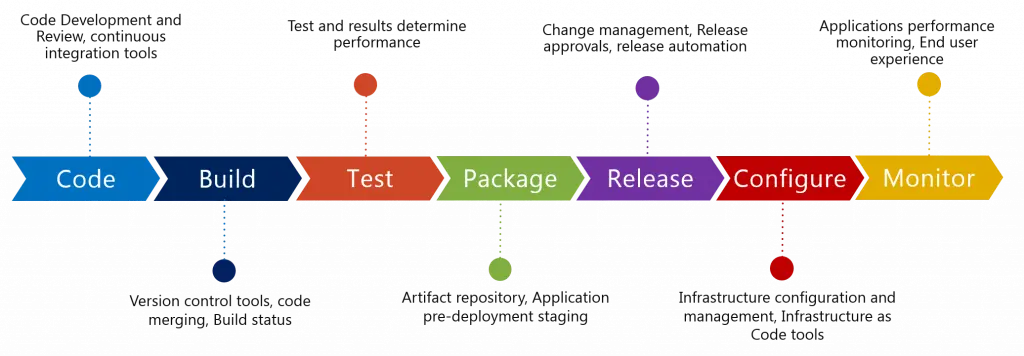
Most of the time, organizations are apprehensive about the change, so the adoption of new methodologies is always considered challenging. Furthermore, without some key enabling technologies, organizations may fail to achieve the desired increase in throughput and struggle to manage a growing infrastructure footprint. Organizations must identify their own inhibitors of change so they can drastically increase their competitiveness and ultimately, their revenue.
According to RightScale ‘fifth annual State of the Cloud’ survey, ‘DevOps is a high priority project for almost 80% of enterprises’ these days.
What is DevOps?
DevOps represents a change in IT culture, focusing on rapid IT service delivery through the adoption of agile, lean practices in the context of a system-oriented approach. It emphasizes people (and culture) and seeks to improve collaboration between operations and development teams.
Bringing Dev and Ops together
DevOps simply indicates the cross-department integration between Development and Operations. It is lean thinking blended with agile philosophy. The revolutionary aspect of DevOps is that it crosses a traditional line by merging software development with the environment in which it is developed. This is more than just an attempt at efficiency, it is a cultural change and it requires an innovative way of thinking in IT where there lies an empathy for other teams within the organization, not just for end users.

DevOps Tools

DevOps RoI
Approach DevOps from a technical perspective:
• Continuous software delivery
• Less complex problems to fix
• Faster resolution of problems
• Improved Security
Approach DevOps from a business perspective:
• Lower IT cost
• Higher Profit
• Faster delivery of features
• More stable operating environments
• More time available to add value (rather than fixing/maintain)
A deeper look into DevOps
The 2016 State of DevOps Report shows that high-performing organizations are widening their lead against lower-performing organizations. Compared to low performers, high-performing organizations deploy 200 times more frequently, have 2,555 times faster lead times, and recover 24 times faster from failed changes, with three times lower change fail rates. Because high performers build quality into each stage of the development process, they also spend 22 percent less time on unplanned work and rework than lower-performing organizations and thus are able to spend 29 percent more time on new work. Furthermore, organizations that better integrate information security objectives into daily work spend 50 percent less time remediating security issues than low performers.
DevOps is Ubiquitous
To sum up, modern-day enterprise applications are riddled with complexities that keep growing from the use of different technologies, multiple databases, and various end-user devices. It is one of the major digital transformation enablers. This practice and methodology is a must for any organization that develops software as part of its business operations. It is unlikely that companies will be able to compete in 5 years if they have not developed mature DevOps processes, which means that they must start now.


